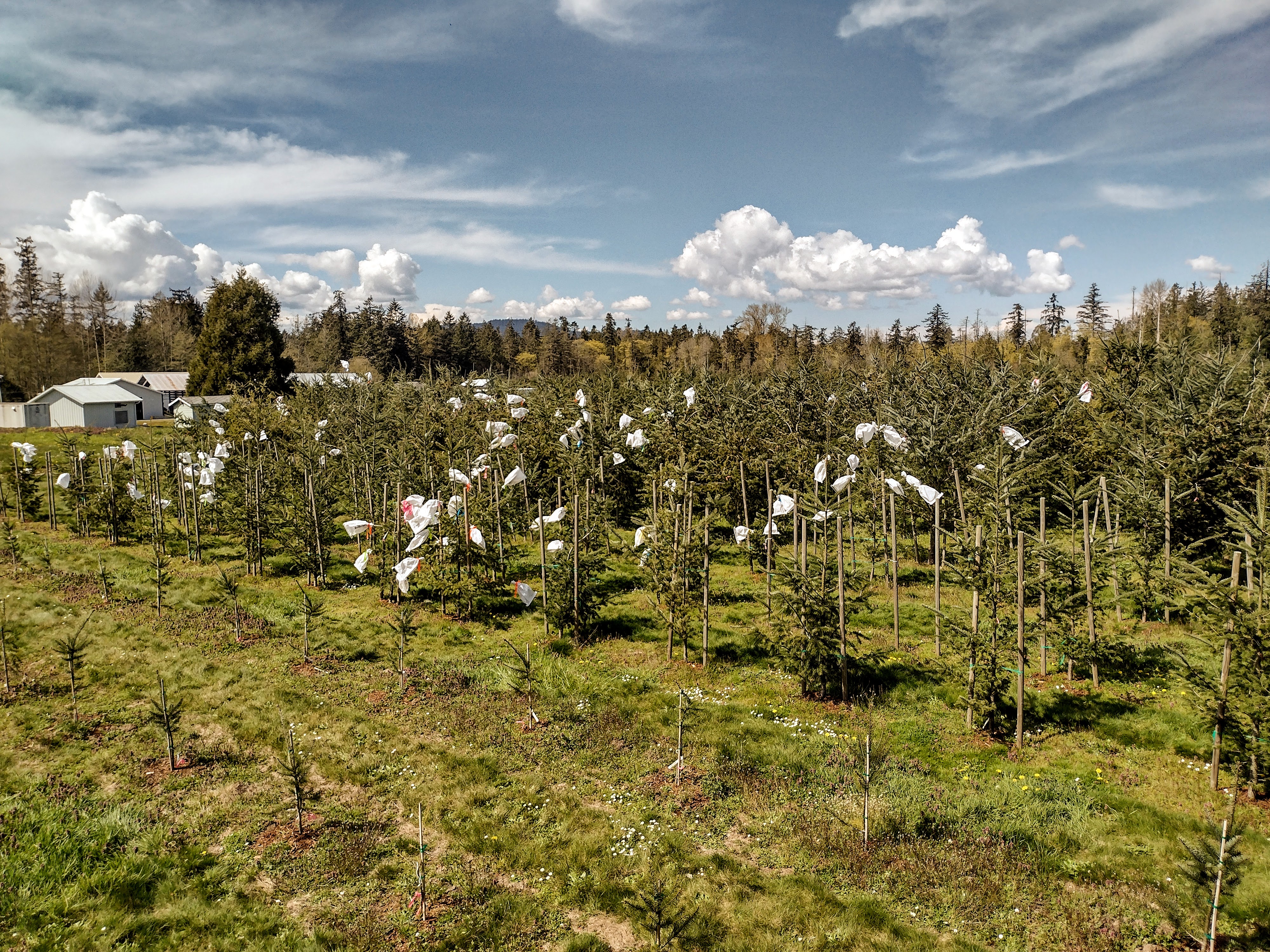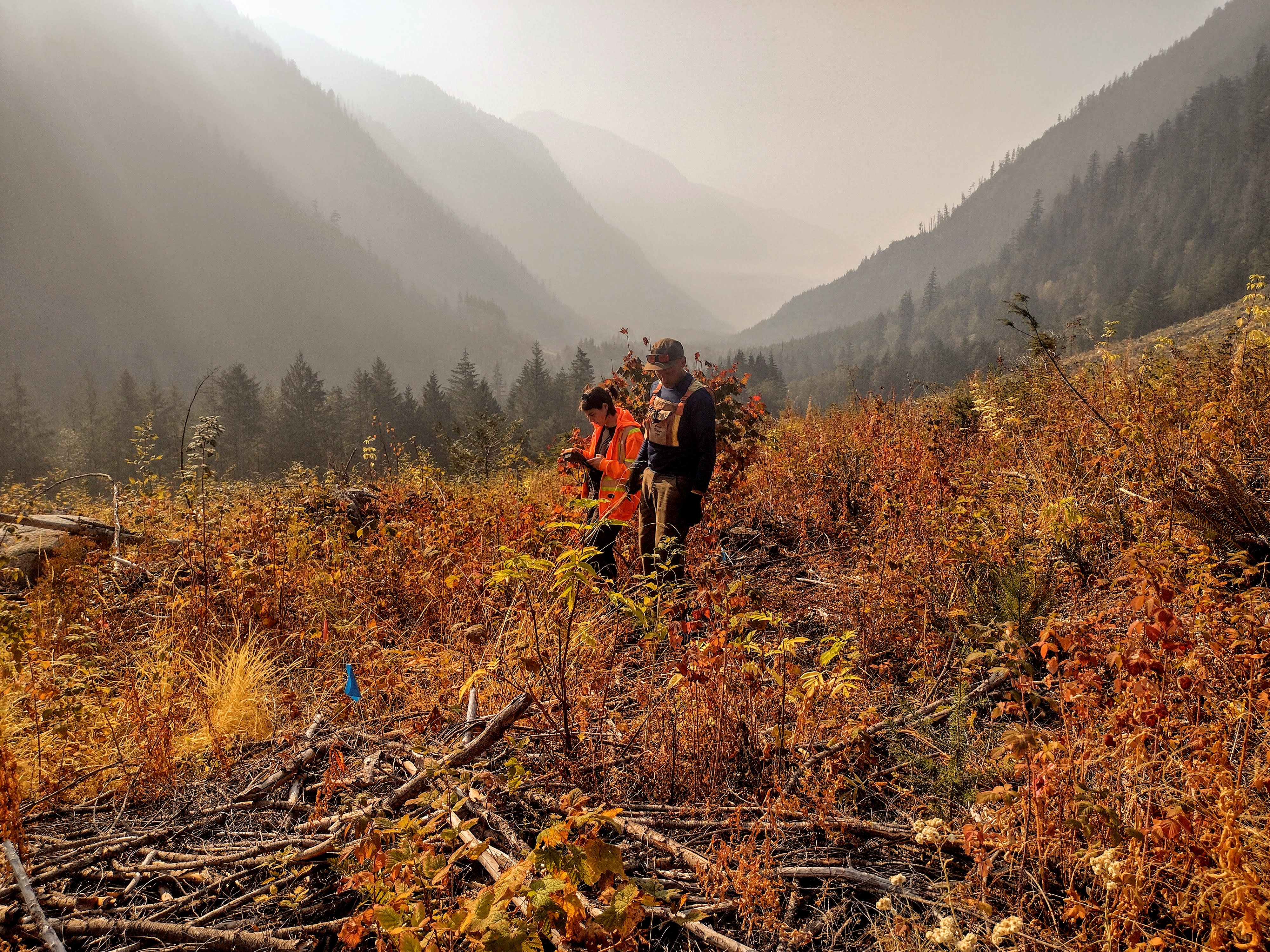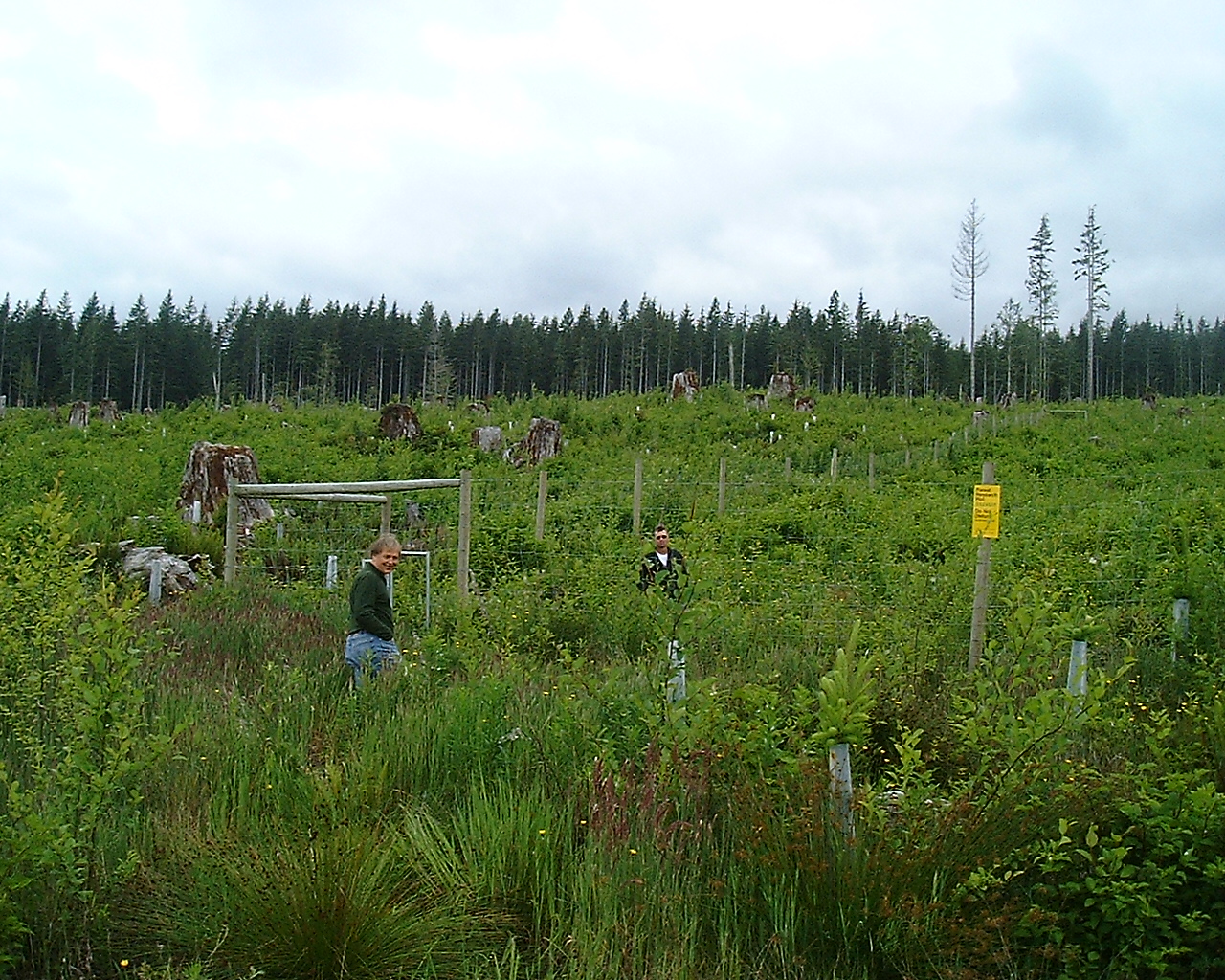Coastal Douglas-fir tree breeding program
The coastal Douglas-fir program is the longest-running tree improvement program in B.C. It started in the mid-1950’s. It is presently in its third generation of breeding and testing, with fourth-generation selections to be made in the coming years.
The primary goal for coastal Douglas-fir breeding is to increase timber volume at rotation while maintaining wood density at the population level. Screening is presently underway for resilience to Swiss needle cast, a fungal pathogen that causes crown thinning and slowed growth, and which is expected to become increasingly prevalent and severe in BC due to climate change. Additional effort is being made to plant new test sites in marginal and harsh environments, to ensure the breeding population is well-adapted to the more severe and variable climates anticipated throughout the coast in coming decades.
Seed orchards in lower elevation coastal areas west of the Coast Mountains are now using third-generation selections, with anticipated genetic gains of 25 to 30 percent volume gain at rotation.
Breeding and testing efforts for coastal Douglas-fir are also carried out in the coastal-interior transition zone (sub-maritime) and in higher elevation coastal areas. A new set of tests are using crosses between these breeding populations, as well as with parents from the interior Douglas-fir breeding program, to make selections from extremely resilient families. These selections will be used to create advanced-generation seed orchards to serve these environments.
References
- Kranabetter, J.M., Stoehr, M., and O'Neill, G.A. 2015. Ectomycorrhizal fungal maladaptation and growth reductions associated with assisted migration of Douglas-fir. New Phytologist.
- O’Neill, G.A., Stoehr, M., and Jaquish, B. 2014. Quantifying safe seed transfer distance and impacts of tree breeding on adaptation. For. Ecol. Manage. 328: 122-130.
- Stoehr, M., Ott, P., and Woods, J. 2014. Inbreeding in mid-rotation coastal Douglas-fir: implications for breeding. Ann. For. Sci. 72(2):195-204.
- Adams, R.P., and Stoehr, M.U. 2013. Multivariate detection of hybridization using conifer terpenes II. Analysis of terpene inheritance patterns in Pseudotsuga menziesii F1 hybrids. Phytologia 95(1): 42-57.
- Stoehr, M., J. Woods, and A. Yanchuk. 2011. Selection Approaches in High-Elevation Coastal Douglas-fir in the Presence of GxE Interactions. Silvae Genetica 60(2): 79-84.

Pollination bags in a breeding orchard near Victoria. These bags prevent wind pollination, allowing breeders to make controlled crosses for field testing.

Research technicians assess early mortality in a sub-maritime progeny trial near Harrison Lake.

A 2nd generation coastal Douglas-fir progeny test, fenced to protect against deer browsing.
